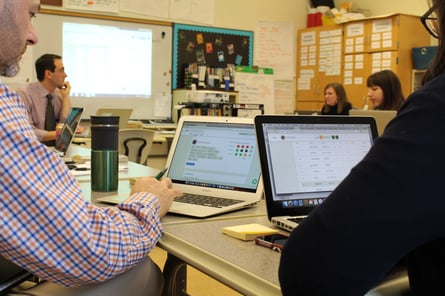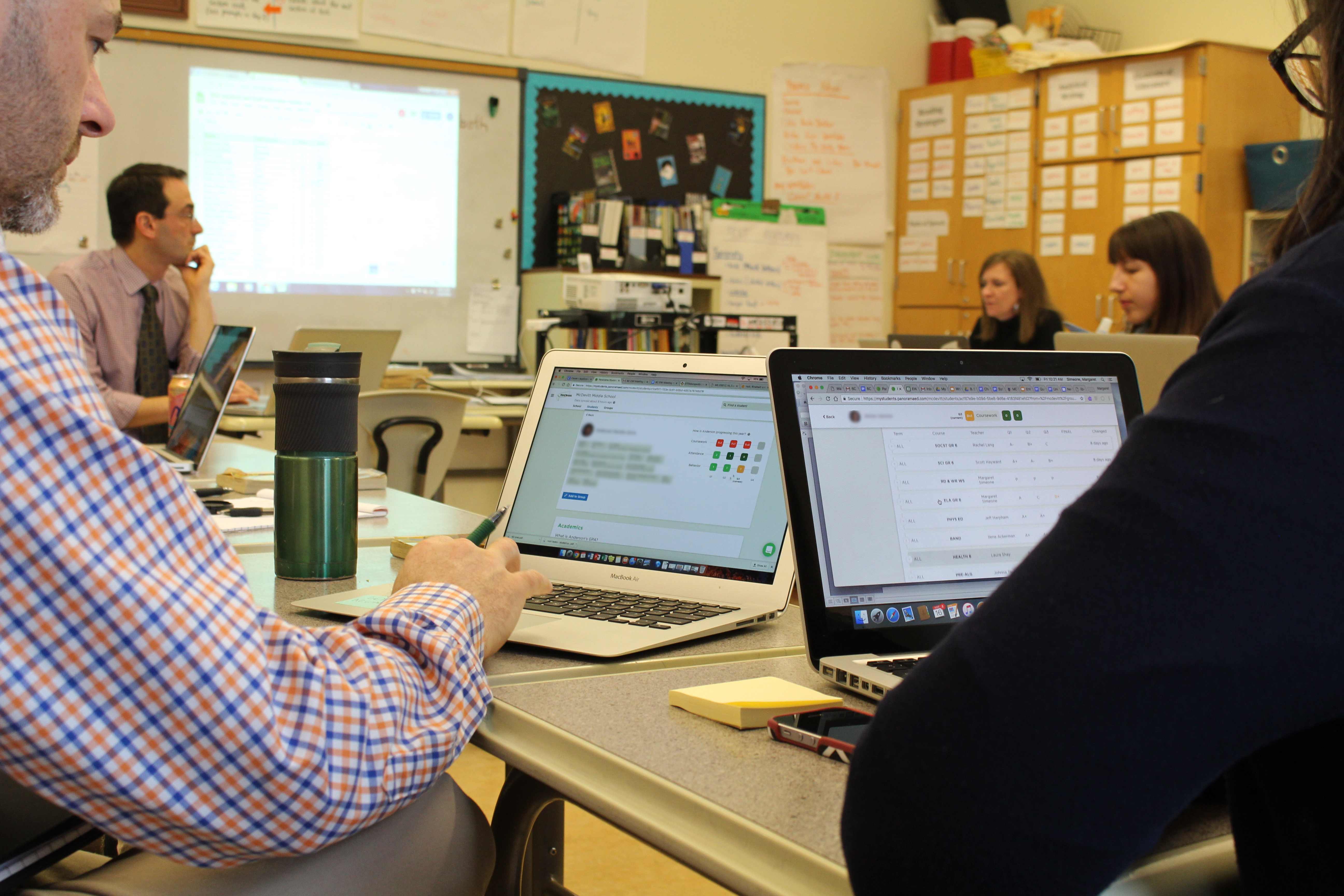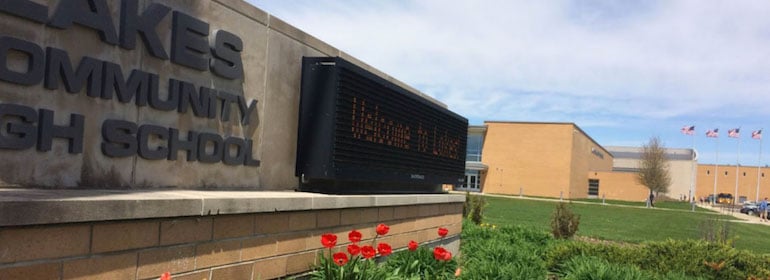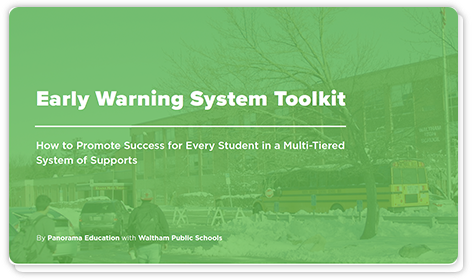Many schools and districts that have implemented an early warning system (EWS) build in structured time for educators and staff to review and collaborate on early warning data. Beyond using this time to identify at-risk students, educators find that EWS meetings are a valuable opportunity to create action plans for supporting these students.
 For example, at McDevitt Middle School in Waltham, Mass., educators and staff are divided into eight grade-level teams, or clusters, that each meet once a month for EWS meetings. During the meetings, educators discuss the progress of their "buddy" students and collaborate to plan interventions and next steps.
For example, at McDevitt Middle School in Waltham, Mass., educators and staff are divided into eight grade-level teams, or clusters, that each meet once a month for EWS meetings. During the meetings, educators discuss the progress of their "buddy" students and collaborate to plan interventions and next steps.
A strong facilitator is key to making an EWS meeting work. Whether the facilitator is a principal, teacher, or counselor, he or she should be skilled at keeping the meeting on track and the conversations grounded in data.
If you are organizing and/or leading an early warning system meeting, follow these tips and best practices to help your colleagues make the most of the time.
How to Structure an Effective Early Warning System Meeting
Before creating a meeting agenda, first set a clear purpose for why you're convening the meeting. For instance, your goal might be for each participant to walk away with a data-driven action plan for supporting one student in the next month. This is often best accomplished through a collaborative meeting structure.
From there, you might organize the agenda into 10-15 minute discussion blocks. Here's an example of how the meeting could flow:
- "Launch and Update" (15 min.): Educators provide progress updates on their monitored students and share action steps that have worked well since the last meeting.
- "Review and Match" (15 min.): Each adult analyzes the data in the early warning system to identify 1-2 additional students with risk factors. Next, adults are assigned to advocate for those students.
- "Plan and Share Student Supports" (10 min.): Educators work together to develop plans to support each identified at-risk student.
- "Pluses and Deltas" (5 min.): As a group, take a few minutes to reflect on what was valuable about the meeting and what could make the next meeting even better.
Click here to download a sample EWS meeting agenda from one of our district partners.
Best Practices for Before, During, and After the Meeting
Here are some must-dos for running an early warning system meeting that encourages collaboration and drives impact for students.
Before the Meeting:
- Review the meeting agenda to make sure you're familiar with each agenda item and the start and stop times for each section.
- Print out copies of the agendas so that participants can reference the agenda during the meeting.
- Identify one data finding to celebrate with the team using your early warning system.
- Remind everyone to bring laptops so they can view the early warning data during the meeting.
- Review feedback from the last meeting (if applicable) so you can make improvements to the discussion process.
- Arrive at the meeting a few minutes early so you have time to hook your laptop up to the projector. Display your early warning system and the meeting agenda on the screen.
During the Meeting:
- Make sure participants have their laptops open and the agenda and early warning system pulled up.
- Keep conversations grounded in data and model this for the group.
- Stick to the start and stop times of each agenda item. Before giving participants work time, let them know how long they'll have and give them a 1-2 minute reminder.
- During the "Launch and Update" section, use your early warning system to show the data point you pre-identified and want to celebrate with the team.
- During the "Plan and Share Student Supports" section, project an action planning template as a Google Document on the screen so teachers can fill it out and see each other work.
- During the "Plus/Delta" section, assign a note-taker to jot down teachers' feedback.
After the Meeting:
- Schedule time in the next team meeting for teachers to partner up and discuss the progress they're making on their action plans.
- Highlight successes in a group email, in 1:1 conversations, or in upcoming meetings.
The facilitator plays a big role in helping educators understand, unpack, and take action on early warning data. We hope these guidelines are helpful as you bring data-driven practices to your own school or district!




.png)


